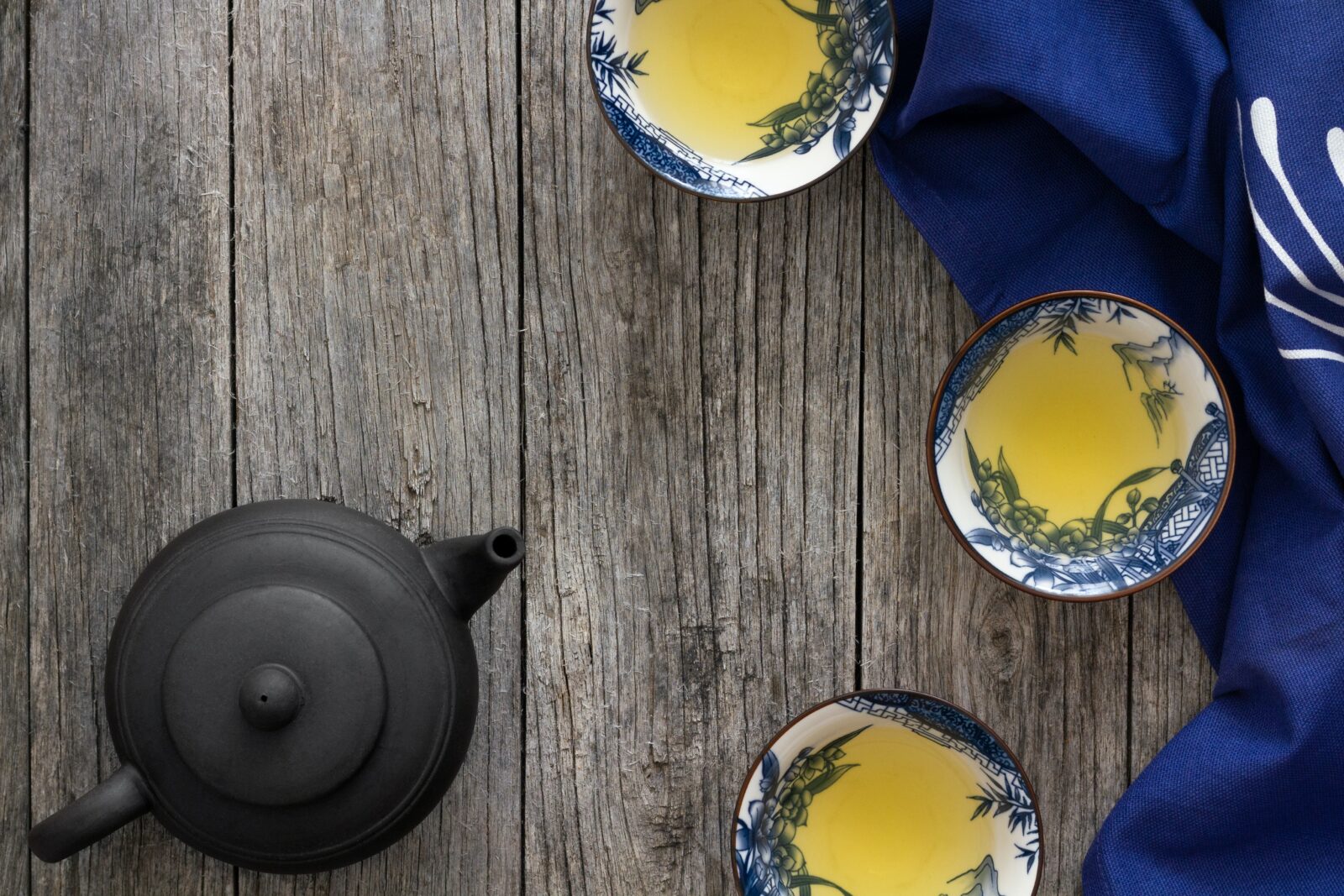Usher in the New With White Tea
To all Front Range high school seniors (and their parents): Happy Graduation!
The route from kindergarten to 12th grade is more like a trail than a straight interstate. It winds. It climbs up, and sinks low. Roots, rocks, fallen limbs and much more repeatedly block the path. Students get lost.
And then one day Joanie or Jiang reaches the summit. They look in all directions, and see exciting new paths. They go where they desire.
It is thrilling.
Another exhilarating point about graduation? Summer is about to begin.
With so many fresh beginnings in the air, we want to champion one of our favorite categories of tea. For many, including those recent graduates, it might be new. It’s also ideal for summertime sipping, both hot and chilled.
It’s time to begin exploring the glorious world of white tea.
What Is White Tea?
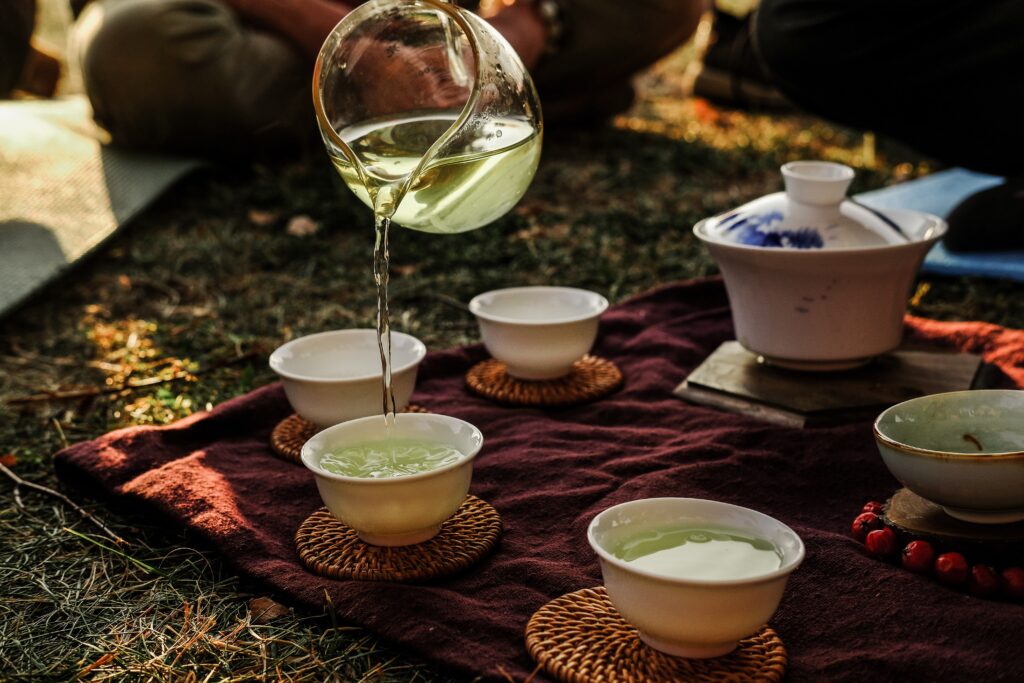
All traditional teas are brewed from the Camellia sinensis plant, a shrub or small tree native to East Asia. Scholars believe it probably first rooted in the region around north Burma and southwestern China.
From that original tea plant, thousands of cultivars have emerged. Just as “tomato” involves many different kinds of tomato — from Beefsteak to Plum to San Marzano — so does the tea plant. Not all teas are the same — not even close.
In addition to different cultivars, tea styles are determined by how they are harvested and preserved.
Oxidation key for tea styles
To make black teas, farmers let expose the tea leaves to oxygen for long enough to darken the leaves. When it is time to stop oxidation, the leaves are steamed or roasted.
White tea sits on the other end of the oxidation spectrum; gentle steaming or roasting extinguishes oxidation shortly after it begins. As a result, white tea retains and showcases more unadulterated tea flavors than some other styles.
Oxidation does not have anything to do with quality. A white tea that is highly reflective of its cultivar is not necessarily better than leaves from the same cultivar that have been heavily oxidized and turned into black tea.
That said, over centuries tea artisans have figured out which cultivars perform best with different preservation techniques: green (no oxidation), white (minimal oxidation), oolong (medium oxidation), pu-erh and dark (oxidation combined with fermentation) and black (heavy oxidation).
Finally, farmers harvest tea buds meant for white tea production before the buds’ leaves have fully unfurled. Fine white hairs cover the young buds. Thus, “white” tea.
Tea destined for white tea is rooted to its place; climate, altitude, soil and harvest time all deeply influence its flavor and texture. As the silver buds are plucked only during a short spring harvest, white tea is rare and precious.
White tea is often is described as delicate and nuanced, which it is. But that doesn’t mean its flavors are evanescent and mild. Some whites offer bold flavors. All of the ones we are about to discuss are wonderful examples of white tea artisanship.
Silver Needle
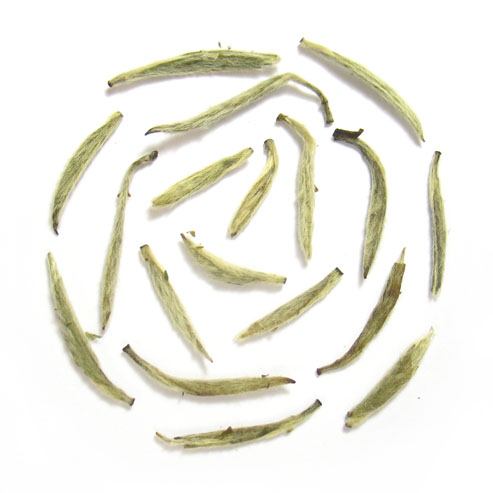
Silver Needle is true artisan tea, and a rare treat.
Farmers hand-pick young Silver Needle buds in early spring, and then fan them out to quickly dry in the sun. Once dry, artisans arrest oxidization by lightly firing the leaves over charcoal at a low heat. The process preserves Silver Needle’s enchanting color.
Silver Needle, known as Bai Hao Yin Zhen in Chinese, is the sweetest of all white teas, even though it’s just dried tea leaves. It will coat your mouth with a clean, smooth sweetness.
We think Silver Needle is especially awesome during the summer. Even when served hot, the flavor and textures seem to lower body heat.
Jasmine Silver Needle
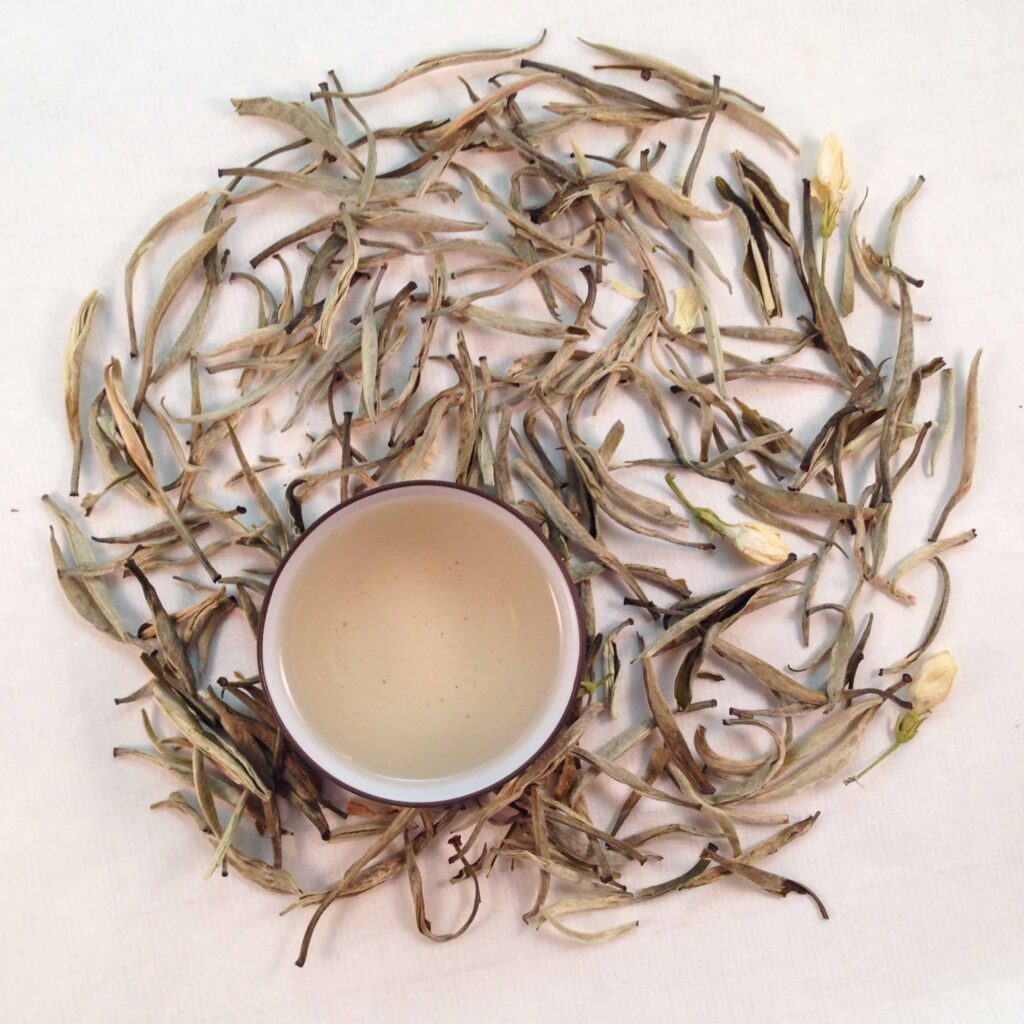
Tea artisans in China centuries ago understood that the combination of jasmine blossoms and tea was majestic. Now, a wide range of styles offer infusions of jasmine, including white tea.
To make Jasmine Silver Needle tea, farmers first harvest Silver Needle white tea buds, and then combine them with night-harvested jasmine flowers for up to six consecutive days. Each infusion lasts between four and five hours. The result is a beautiful tea, one that captures the essence of classic white Silver Needle tea and enlivens it with aromatic jasmine blossoms. This is regarded as the king or all jasmine teas.
Organic Peony White
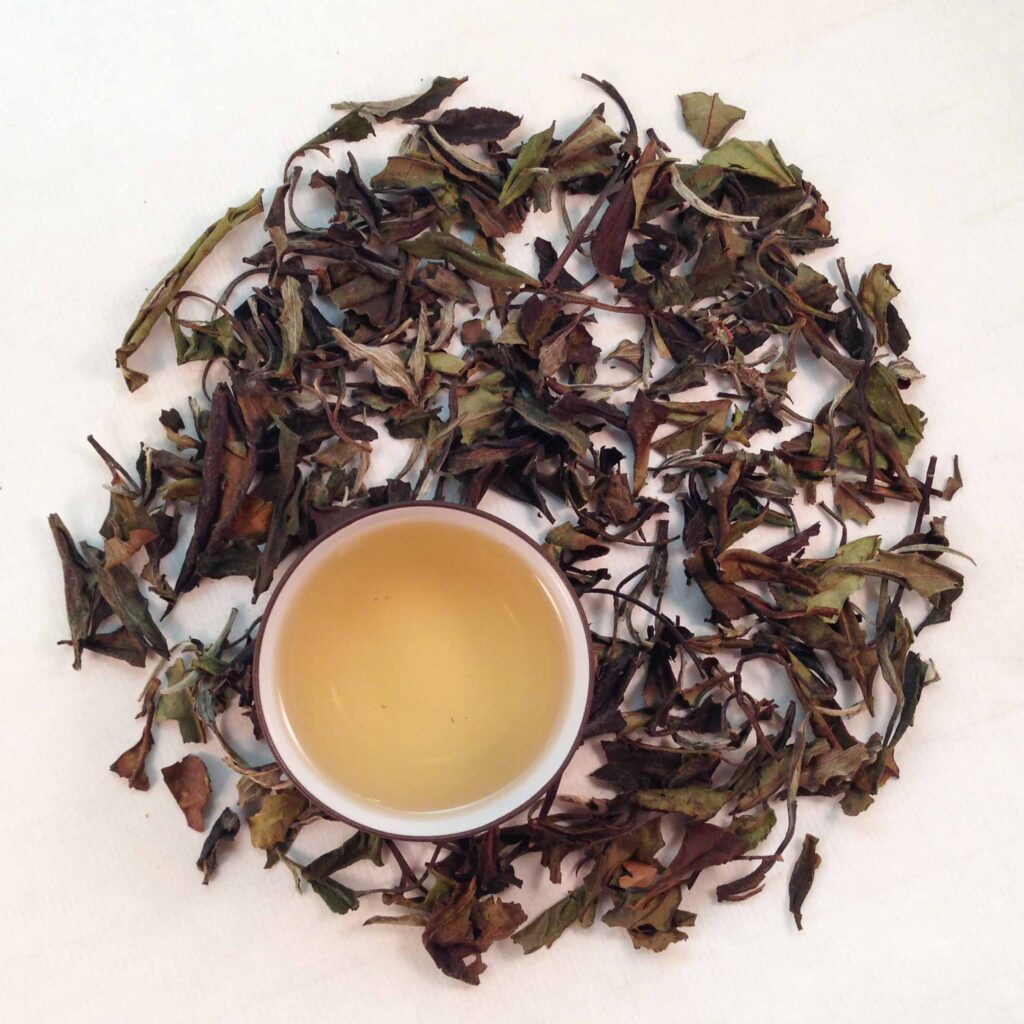
Peonies are gorgeous, and their aromas are widely celebrated. White, on the other hand, is not exactly bold — it’s not even a color. So a tea named “White Peony” might have you wondering: Is this number going to revolve around subtlety or power?
In the case of our Organic Peony White tea, the answer is power, baby. This one packs a floral punch, one reminiscent of fruit trees in bloom in spring.
Farmers in southern China’s Fujian province grow Peony White, called Pai Mu Tan in Chinese. The province, the home of the famous tea growing region of the WuYi Mountains, is also famous for its oolongs, as well as Silver Needle (discussed above) and the smoky tea lapsang souchong.
As with all white teas, tea buds are harvested in early spring, and processing is minimal. Peony White brews into cups redolent with a warm, rich sweetness. We love sipping cups of this fabulous white tea during summer mornings and afternoons.
Bai Mu Dan White Tea Cake
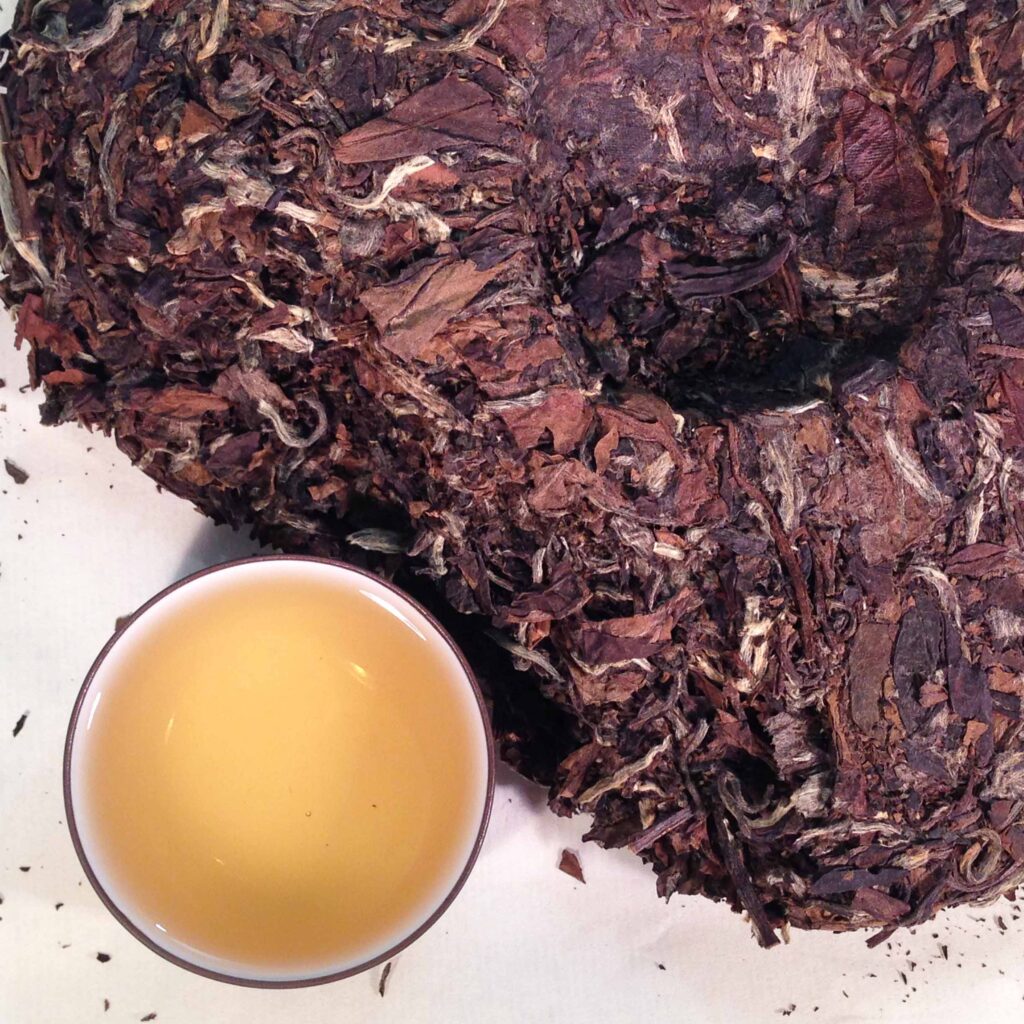
If you like Peony White — you will! — then this is a must.
Some teas in China are formed into cakes. The most famous among them are pu-erhs, the style of Chinese tea that is fermented. But we carry two cakes crafted from white tea. And tea artisans make this one out of Peony White.
The style of Peony White found in Bai Mu Dan comes from a semi-wild tea garden on Taimu Mountain, in the northern reaches of Fujian Province. The cake version of White Peony offers the same floral notes, but it also possesses a long-lasting sweet after-taste (called hui gan in Chinese) reminiscent of wildflower honey.
Shou Mei White Tea Cake
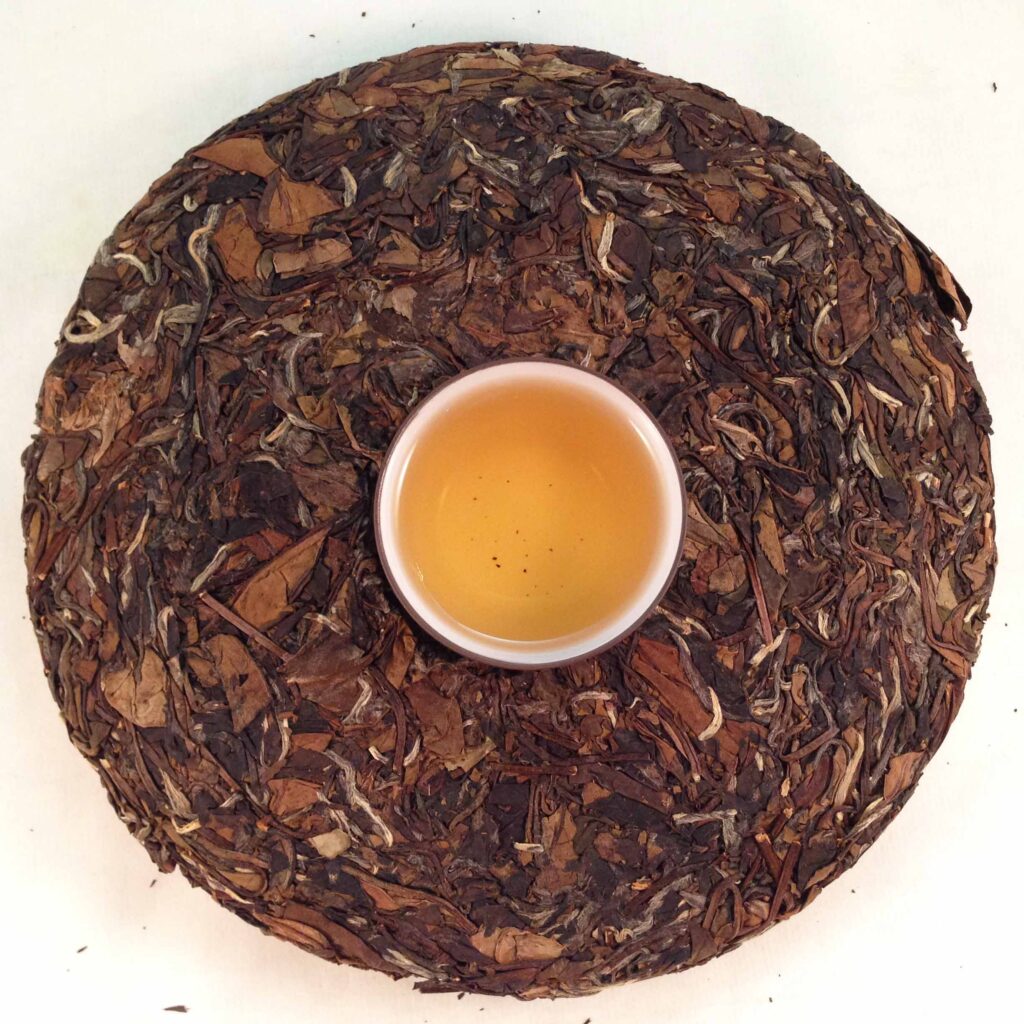
Our other cake made from white tea is Shou Mei, which means “Old Man’s Eyebrow” in Chinese. As with Bai Mu Dan, farmers in Fujian Province grow and process the tea, which is famous for its medicinal benefits. Among others, Shou Mei fans champion it for its ability to strengthen the immune system, to improve complexion and to detox the body.
As with most tea cakes, Shou Mei ages well. Over time, the taste grows sweeter, and the medicinal benefits more concentrated.
Summer Tranquility
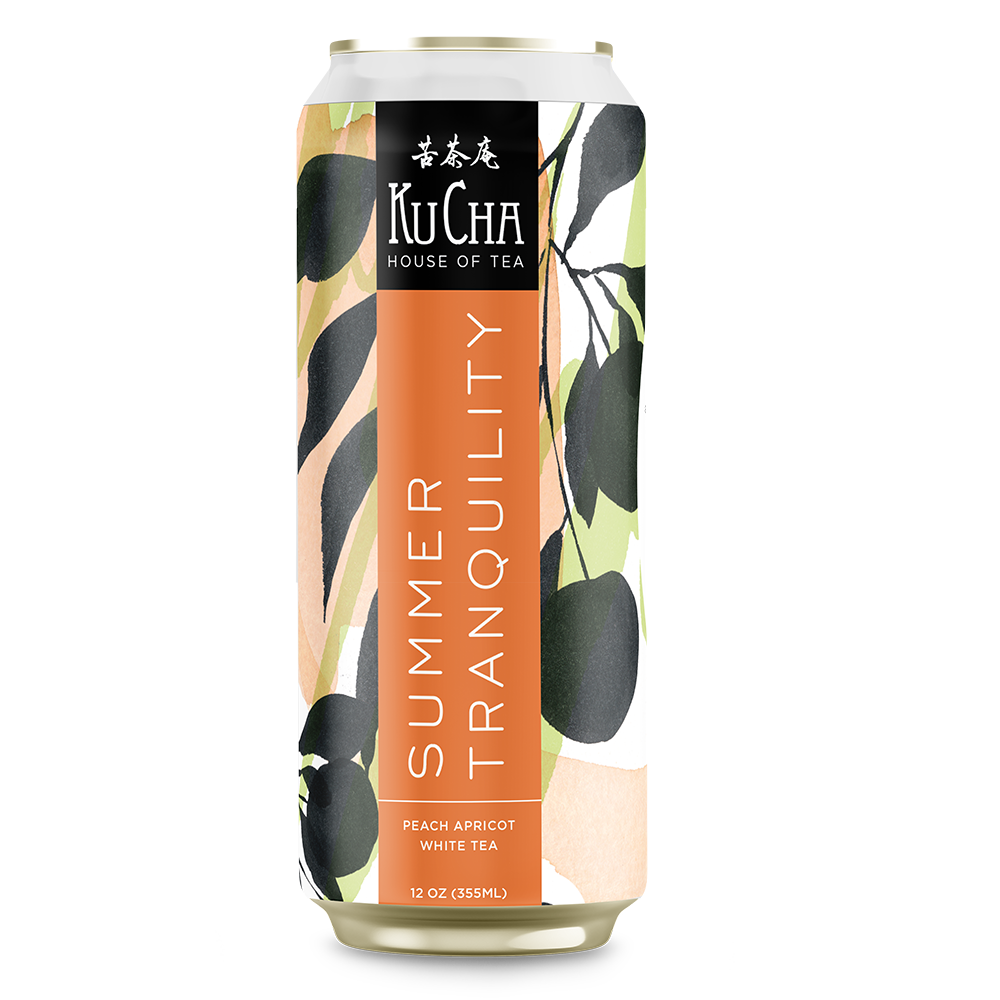
The name of this beauty suggests its favorite season. We found this white tea, enriched with peach and apricot, to be so refreshing that we featured it as our ready-to-drink white tea. To make it to the canning line at Ku Cha, the tea has got to be thirst-quenching and delicious!
Enjoy Summer Tranquility hot, poured over ice or just refrigerated in a carafe after brewing for cold sips all day long. Another excellent idea? Try the canned version of Summer Tranquility white tea! You might end up buying a case of it.

